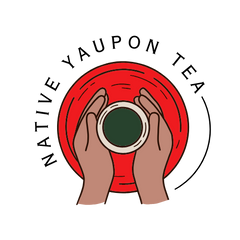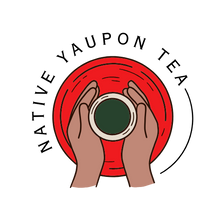Why is Coffee So Expensive? Tariffs and the Environment.
I remember officially becoming a coffee snob in 2008 while working for a popular health food store chain. My favorite bean was Larry’s Coffee, the brand that today proudly states on their website, “We’ve been roasting, small-batch, fair trade, organic coffee before it was cool.” Therefore, I was sipping ethical java before it was cool. I also remember baulking as the prices rose and the packaging shrank, causing me to periodically fall back on a more economical favorite, Cafe Bustelo.
So, as the old-timers would say, “I remember getting a Coca-Cola for a nickel.” I remember when I could buy 12-16 oz of coffee for $8 to $10. Today, the price of a 12-oz bag of Larry’s Beans is $19.50!! The prices of coffee have essentially doubled over the last decade. In this article, I explore why this is the case and suggest a coffee alternative that offers both ecological and economic benefits to your pocketbook.
Why is Coffee So Expensive?
The rise in coffee prices began in 2010, shortly after I learned about terms like fair trade, shade-grown, ethical, and organic. Surging 20%, Larry’s Beans and fancy terms became a splurge. What began the era of consistent price increases in coffee?
2010 saw the beginning of environmental factors that continue to affect coffee prices today. Droughts and other adverse weather conditions in key coffee-growing regions like Vietnam and Central America negatively impacted crop yields. Additionally, emerging markets like China and India saw a surge in demand for coffee, further straining supply.
2016 El Niño and La Niña cycles began intensifying global weather volatility. With the world’s top coffee producer, Brazil, affected from 2021-2023, suffering devastating frosts and droughts that slashed yields. These shocks are ongoing and expected to worsen.
In 2018, the U.S. began imposing tariffs on several countries, triggering retaliatory measures. Continuing into 2023-2025, some coffee-exporting countries have faced new tariffs or lost favorable trade status. Ongoing trade tensions between the U.S., China, and Latin American countries will continue to impact agricultural exports, including coffee.
Despite the increase in coffee prices, coffee consumption has been steadily rising, increasing demand. Keeping the cost of coffee high.
Coffee and Sustainability
Let’s talk about the other price we pay for coffee. Back when I was falling in love with my Larry’s Coffee French press routine, I was also learning all the buzzwords: shade-grown, fair trade, organic, sustainable. At the time, I thought I was buying coffee responsibly. And to be fair, I was.
But the deeper I looked, the more uncomfortable the picture became. Coffee, even the ethical kind, comes with a serious ecological footprint.
For starters, it’s a tropical crop. It doesn’t grow here in the continental U.S., which means every single bean has to travel thousands of miles before it reaches your cup. That’s fuel, packaging, warehousing, and shipping emissions stacked on top of labor and farming costs.
Then there’s the issue of water. Coffee is notoriously thirsty. It takes around 37 gallons of water to produce just one cup of coffee. That’s not counting the water used for processing, which can cause runoff and contamination in the very regions already struggling with drought.
And perhaps the biggest red flag? Deforestation. In many regions, forests are cleared to make way for sun-grown coffee plantations even as those same forests are desperately needed to regulate water, preserve biodiversity, and capture carbon.
Yes, some companies go the extra mile to source shade-grown beans and invest in agroforestry. But the reality is, the vast majority of global coffee production is tied to systems that exploit land, water, and labor, all for a product that’s becoming more and more volatile in price and harder to grow.
It’s not just a question of how much we’re paying. It’s what we’re paying for.
Yaupon: An Alternative to Coffee
This is where yaupon holly quietly steps in, not as a trendy new superfood, but as a plant that’s been here all along.
Yaupon is native to the southeastern U.S., which means it doesn’t need to be shipped across oceans or trucked across continents. It grows without irrigation, thrives in sandy or nutrient-poor soils, and can be wild-harvested or regeneratively farmed. No deforestation. No monocropping. No need to bulldoze rainforests to keep up with global demand.
Yaupon often grows in neglected or fire-suppressed ecosystems, where its presence supports native biodiversity and helps restore ecological balance. In other words, the more we drink yaupon, the more we care for the land it comes from.
And let’s talk water. Yaupon uses a fraction of the water that coffee production demands. It doesn’t require chemical processing or infrastructure-heavy wet mills. Just harvest, dry, roast (if desired), and steep.
Culturally, it’s no less rich than coffee. Indigenous peoples of this continent have used yaupon for centuries in ceremonies, medicine, and social contexts. Choosing yaupon isn’t just a sustainable act; it’s a reconnection. To place, to plants, to practices that were nearly erased.
So when we compare that to a $19.50 bag of coffee that comes with an invisible trail of deforestation and diesel fuel, yaupon starts to look a lot less like a niche tea and more like a necessary shift.

How to Make the Switch
Switching from coffee to yaupon doesn’t have to be all-or-nothing. It’s better if it’s not.
Start small. Brew a cup of Golden Roast yaupon in the morning when you want a gentle lift without the jitter. Or try our Dark Roast yaupon in the afternoon when your nervous system could use a break, but you still want something bold and satisfying in your mug.
If you're a die-hard coffee drinker, try blending. Add a teaspoon of yaupon to your coffee grounds before brewing it mellows the edge, reduces acidity, and stretches your stash. Or alternate days: coffee one day, yaupon the next. You might be surprised how quickly your body craves the smoother ride.
This isn’t about restriction. It’s about rebuilding your energy ritual on your terms with a plant that grows here.
Conclusion: Drink With Intention
Coffee isn’t the enemy. But let’s be honest, it’s gotten expensive, unpredictable, and environmentally heavy.
Yaupon offers something different. A way to stay energized without outsourcing your ritual to global supply chains. A way to drink with the seasons, with the land, with a deeper awareness of where your energy comes from.
You don’t have to give up coffee forever. But adding yaupon to your routine is a simple, powerful shift. For your body. For your budget. For your biome.
Drink with intention. Choose something native. And let your morning cup mean more.

